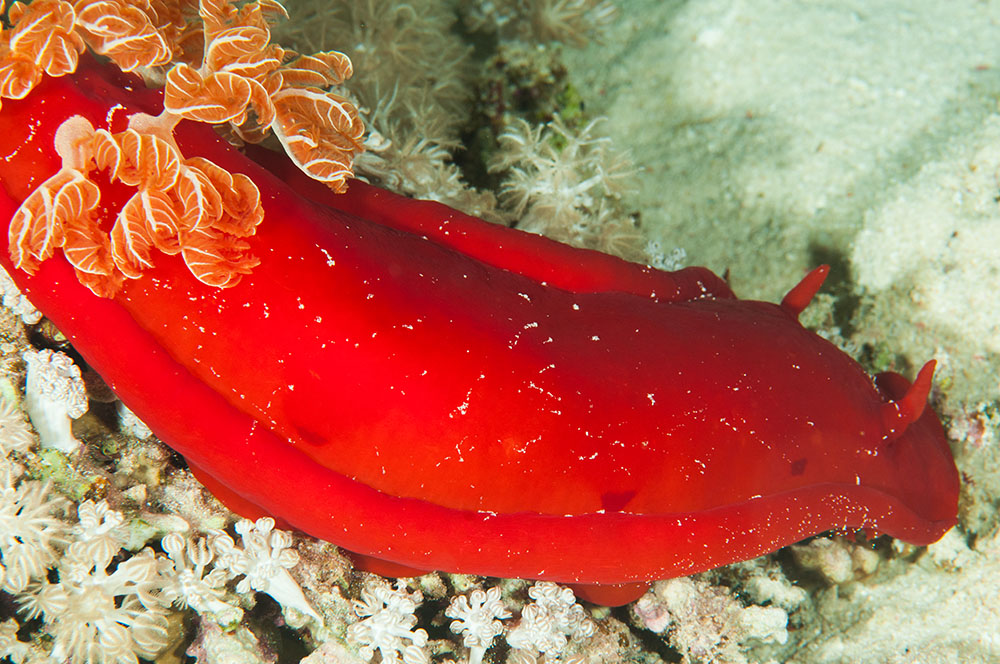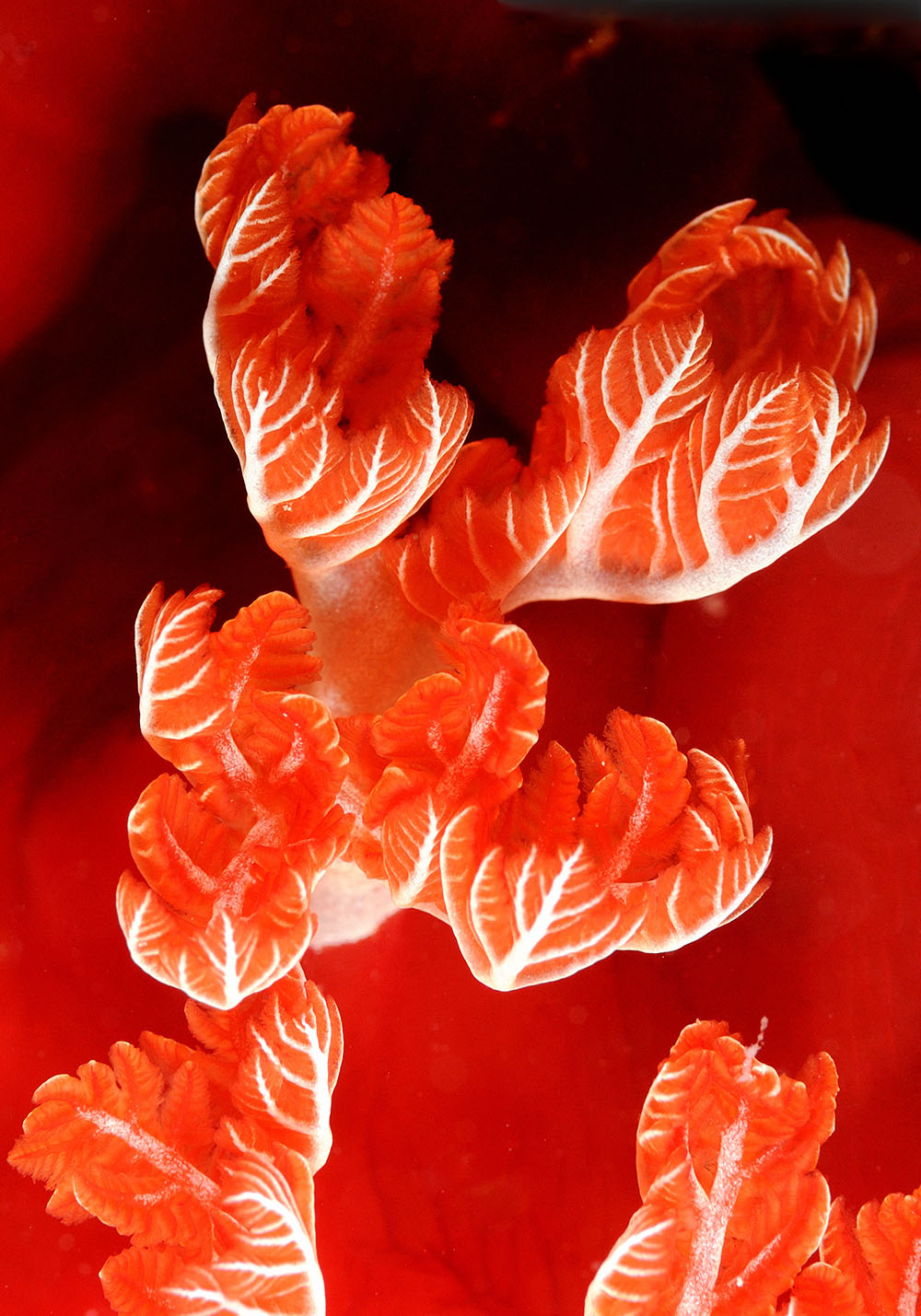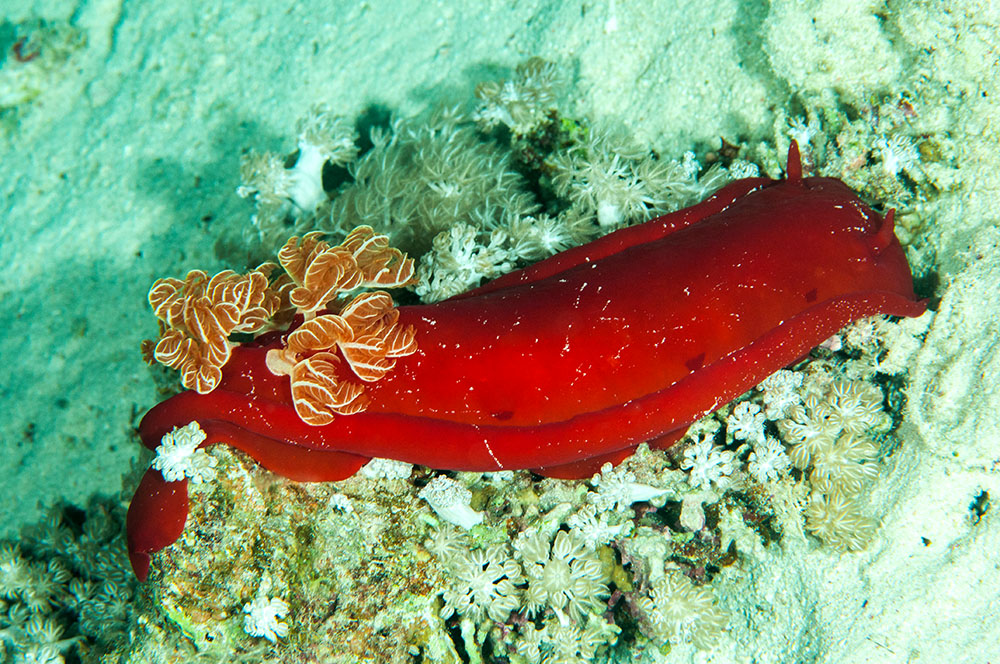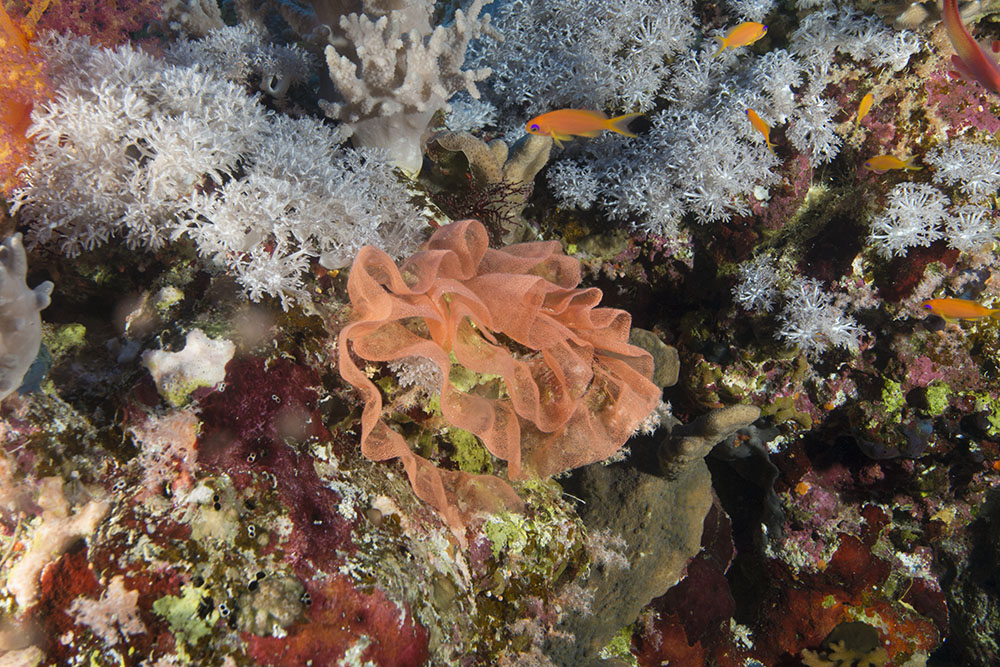Many underwater photographers have their favorite type of subjects: some love shooting wrecks, others sharks, whilst some favor fish portraits. For me, nudibranchs are in my top 5, and possibly my overall favorite, with the exception of sharks.
The best nudi, in my opinion, is Hexabranchus sanguineus. It’s relatively common across the Indo Pacific and you don’t have to look too hard to find one. At up to fifty centimeters in length, even a casual sweep of your torch across a nighttime reef will reflect their vivid red, making them easy to spot. Remember, below a few meters, red is not a common color.
Like all nudibranchs, Spanish Dancers sport naked gills and those of H. sanguineus are particularity fine, sometimes hosting Periclimenes imperator shrimps, though I’ve yet to find any.
Spanish Dancers come in a range of colors, mainly reddish to dull brown and olive, though a yellow variant has been recorded.
They gain their name from their ability to swim. When disturbed, the animal can unfurl the edges of its mantle and in a surprisingly sinuous motion propel itself through the water. The movement has been likened to a flamenco dancer’s skirt, hence the name.
Regrettably, in a well-meaning effort to please photographers like me, some dive guides will scour the reef looking for an unsuspecting specimen and when found will drag it off the reef – where it feeds on a species of sponge, from which it acquires a noxious chemical for defensive purposes – and let it go mid-water, hoping it will swim for a shot. This is not recommended and is almost certainly quite distressing for the animal and will separate it from its mucous trail which is important for its navigation.
Spanish dancers are hermaphrodites and after mating will lay surprisingly beautiful egg masses. In the image below, the anthias provides scale.













0 Comments